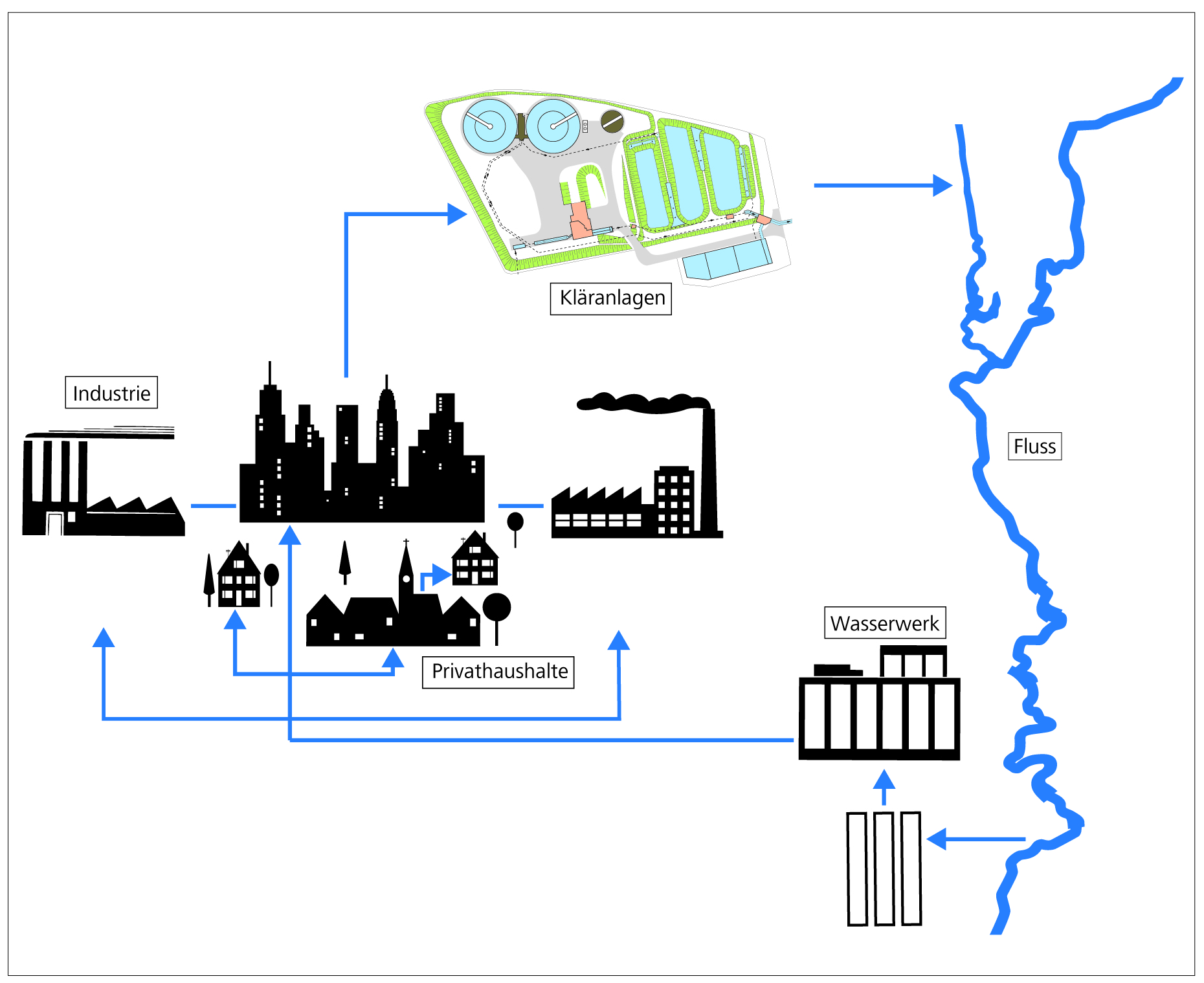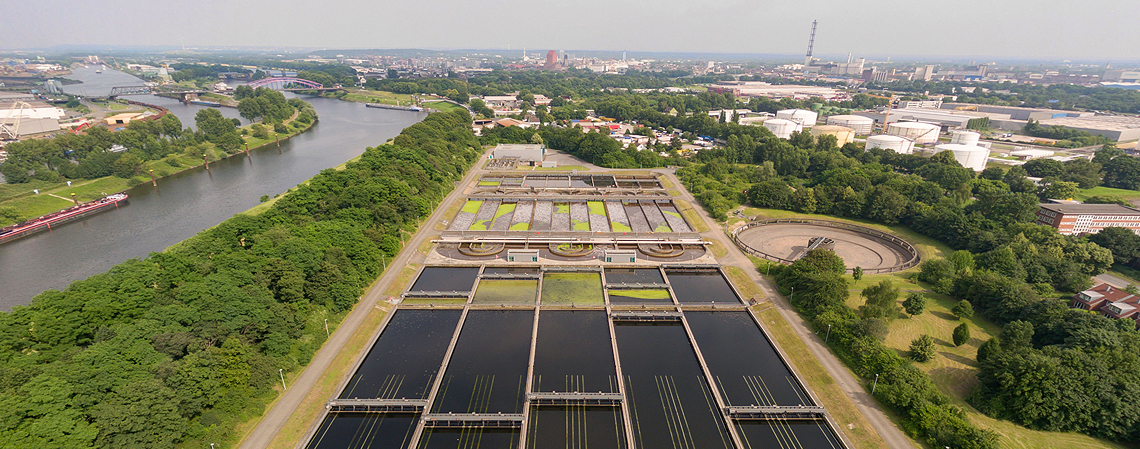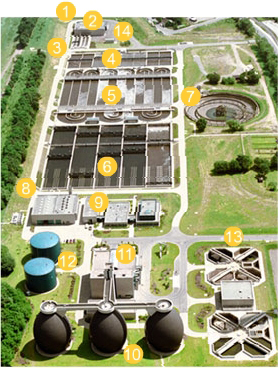Sewage treatment plants
In the Ruhr catchment area, waste water is produced every day by 2.2 million people in private households and commercial companies. It contains highly diverse contaminants ranging from food leftovers, paper, and faeces to industrial residue. Waste water thus contaminated must not enter our rivers. That is why the sewage is gathered in municipal sewer networks and delivered to one of the 69 sewage treatment plants of the Ruhrverband, as you can see in the settlement drainage diagram.
Once it has reached the sewage treatment plant, the waste water undergoes intensive mechanical and biological treatment. This involves the mechanical separation of solid content and the biological removal of dissolved solids. Thus cleaned, the water is delivered back into a river. The solids removed from the sewage are transferred to sludge treatment. The design of a sewage treatment plant and the choice of treatment processes depend on the degree of water contamination. In Germany, there are legal requirements governing the level of water cleanliness to be achieved. In some cases where cleaning requirements are particularly high for reasons of water pollution abatement, sewage treatment plants may have an additional treatment stage.











